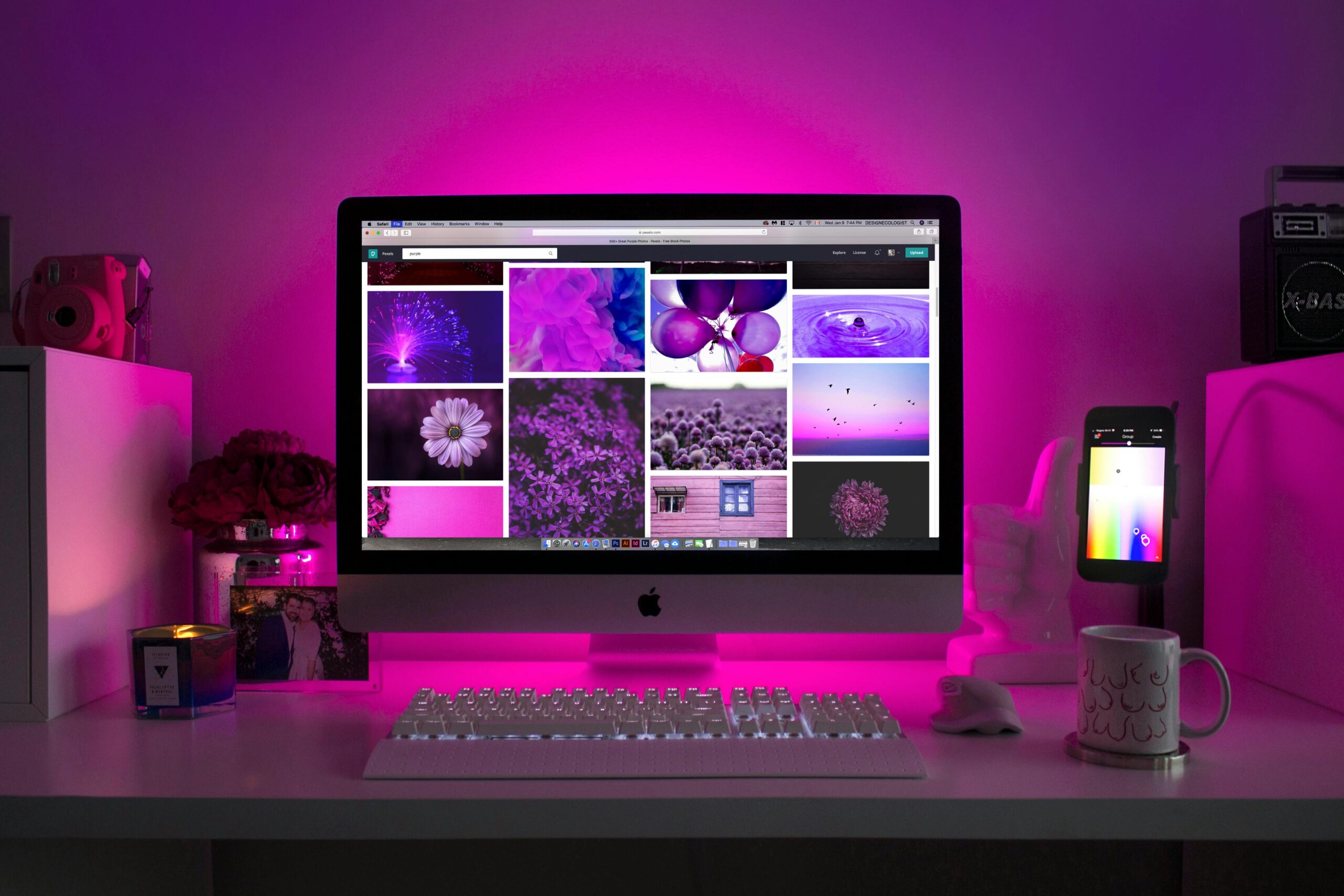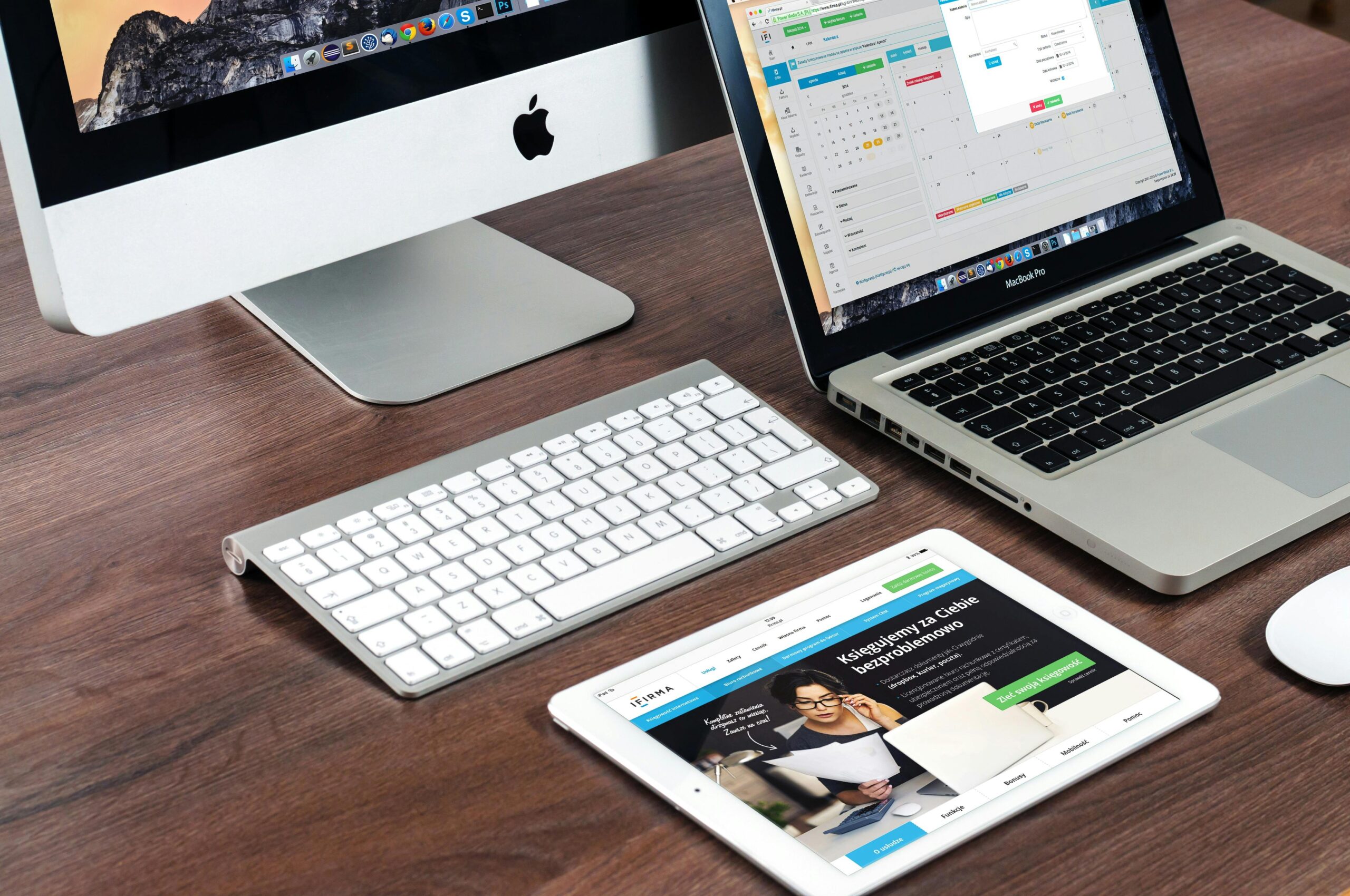The Art & Science of
Stunning Website Design.
Master Your Website. Maximize Your Brand.

Master Your Website. Maximize Your Brand.
Your website’s theme isn’t just about looks; it’s about user experience, functionality, and conversion. A well-designed theme should be intuitive, responsive, and aligned with your brand’s identity. That’s why I dive deep into topics like “How to Choose the Perfect Theme for Your Brand or Business”, helping you navigate the sea of options to find one that reflects your vision and goals.
So, if you’re ready to take your website to the next level, stick around—because great design starts here. Let’s create something incredible together.


Last summer, I found myself in a stressful situation when my mom’s air conditioning suddenly stopped working in the middle of a sweltering day in Miramar, Florida. With the heat index soaring, it wasn’t just an inconvenience—it was an emergency. My mom relies on her AC to keep cool and comfortable, so I needed a quick and reliable solution. That’s when I scrambled to find an emergency AC repair service, hoping I’d get lucky with a knowledgeable technician who could fix the problem fast.
After searching for emergency HVAC services in Miramar, I finally found a company that could send someone out within a couple of hours. Given the situation, I didn’t have the luxury of shopping around, so I crossed my fingers and hoped for the best. Thankfully, the technician who showed up turned out to be not just skilled, but also incredibly helpful in teaching me how to avoid future AC issues.
The tech quickly assessed the AC unit and discovered that the capacitor had failed, a common issue in Florida’s extreme heat. He explained that capacitors can wear out over time, especially when the system is working overtime to combat high temperatures. Fortunately, it was a straightforward fix. Within an hour, cool air was flowing again, much to my mom’s relief.
What made this technician stand out wasn’t just his ability to fix the issue—it was the wealth of knowledge he shared with me to help prevent future emergencies. Here are some of the key takeaways I learned:
The experience reinforced just how important it is to have a trustworthy and knowledgeable HVAC technician. Not only did he fix the immediate problem, but he also equipped me with practical tips to help prevent future AC emergencies. I walked away from the situation feeling more confident in handling basic AC maintenance, knowing that simple steps can extend the life of the system and save money on repairs.
If you ever need emergency AC repair in Miramar, Florida, don’t just look for someone who can do a quick fix—find a technician who will take the time to educate you. A good HVAC professional can make all the difference in keeping your home cool and comfortable for years to come.

When I first started designing websites, I focused heavily on colors, images, and layout—but I quickly realized that typography is just as important. The right font can enhance readability, establish brand identity, and even influence user behavior. On the flip side, the wrong font can make a website look unprofessional, hard to read, or inconsistent with a brand’s message.
Typography isn’t just about picking a “pretty” font—it’s about choosing typefaces that align with your brand’s personality, improve user experience, and enhance the overall design. If you’ve ever struggled with picking the right fonts for your website, this guide will help you make smart, strategic choices.
Typography isn’t just about aesthetics—it’s a fundamental part of web design. Here’s why it’s so important:
✔️ First Impressions Count: Fonts immediately set the tone of your website. A clean, modern font makes a site feel professional, while a playful or handwritten font can add personality.
✔️ Readability & Accessibility: If users struggle to read your content, they won’t stay long. Good typography ensures readability across all devices.
✔️ Brand Identity & Recognition: Fonts play a huge role in branding. Think of Coca-Cola’s script font or Apple’s sleek, minimalist typeface—fonts help define a brand’s identity.
✔️ Emotional Impact: Fonts evoke emotions. Serif fonts feel traditional and trustworthy, while sans-serif fonts are modern and approachable.
Choosing the right typography isn’t just about looks—it’s about creating a cohesive, user-friendly, and brand-aligned website.
Before choosing a font, ask yourself: What message do I want to convey? Different fonts have different personalities, and your choice should match your brand’s tone.
Your font should match your brand’s voice and identity. A law firm wouldn’t use a playful handwritten font, just as a children’s toy website wouldn’t use a rigid, corporate serif font.
A stylish font is great, but if users can’t read your text, it’s useless. Here’s how to ensure readability:
✅ Stick to Two or Three Fonts Max: A good rule of thumb is to use one font for headings and another for body text. Too many fonts can make a site look cluttered and unprofessional.
✅ Choose a Readable Size: Body text should generally be 16px or larger to ensure easy reading on all devices.
✅ Use Proper Line Spacing & Letter Spacing: Crowded text is hard to read. Adjust line height and letter spacing to improve clarity.
✅ Test Your Font on Mobile Devices: Many fonts look great on desktops but become difficult to read on small screens. Always check responsiveness.
Font pairing can make or break a website’s aesthetic. Here are a few classic combinations that work well together:
The key to good pairing is contrast—make sure the fonts complement each other without clashing.
Not all fonts display properly on all devices. Some unique fonts may look great on your computer but render differently on another browser. That’s why it’s important to use web-safe fonts, which are universally supported across all devices.
Google Fonts is a great place to find fast-loading, web-optimized fonts. Avoid overly decorative fonts that slow down your site’s loading speed. A slow website means high bounce rates, which hurts user engagement and SEO rankings.
Typography is more than just an aesthetic choice—it’s a functional, strategic tool that enhances user experience, reinforces branding, and keeps visitors engaged. By choosing the right fonts, prioritizing readability, and pairing wisely, you can create a website that looks polished, professional, and memorable.
So before you finalize your website’s design, take a step back and ask: Does my typography reflect my brand’s personality? Is it easy to read? Is it optimized for all devices?
If the answer is yes, you’re on the right track. If not, it might be time for a font refresh!

As someone who has built and customized countless websites, I’ve seen firsthand how design trends evolve. But one thing that has become increasingly clear over the years is that mobile-first design isn’t optional—it’s essential. With more than half of all web traffic coming from mobile devices, websites that aren’t optimized for smartphones and tablets are missing out on a massive audience.
If your website isn’t responsive, meaning it doesn’t adapt seamlessly to different screen sizes, you’re not just frustrating users—you’re also hurting your brand’s credibility, engagement, and even search engine rankings. Let’s dive into why mobile-first design should be a priority and how it impacts your online presence.
When I first started designing websites, desktop was the main focus. Mobile was an afterthought, something you’d tweak later if needed. But now, the majority of users browse, shop, and engage on mobile first. Google has even switched to mobile-first indexing, meaning it primarily looks at the mobile version of your site to determine rankings.
If your site isn’t optimized for mobile users, you could be:
❌ Losing potential customers who can’t navigate your site properly
❌ Hurting your brand’s reputation with a clunky, outdated design
❌ Dropping in search rankings because Google prioritizes mobile-friendly sites
The bottom line? If you’re serious about building a successful online presence, your website theme must be responsive.
Your website is often the first impression people get of your brand. A sleek, mobile-friendly site instantly signals professionalism, credibility, and attention to detail. On the other hand, if users land on a site where text is too small, buttons are unclickable, or images don’t load properly, they’ll bounce—and probably never return.
A responsive design ensures that your branding elements—logo, fonts, colors, and imagery—look great across all devices. Whether someone is viewing your site on a smartphone, tablet, or large desktop screen, they should experience a consistent and seamless design.
Think about how often people shop, read blogs, or book services on their phones. If your website isn’t easy to navigate with one hand, loads slowly, or requires pinching and zooming, visitors will move on to a competitor. A mobile-first approach keeps users engaged and builds trust in your brand.
Beyond user experience, Google actively rewards mobile-friendly websites with higher search rankings. If your theme isn’t responsive, you’re likely losing visibility to competitors who have optimized their sites.
Here’s how mobile-first design boosts SEO:
✔️ Faster Load Times – Responsive sites load faster, reducing bounce rates (a key ranking factor).
✔️ Lower Bounce Rates – When users stay on your site longer, Google sees it as valuable content.
✔️ Improved Usability – Easy navigation leads to better engagement, another ranking factor.
✔️ Higher Click-Through Rates – Google prioritizes sites that deliver a smooth mobile experience.
If you’ve ever had to wait for a slow website to load on your phone, you know how frustrating it is. Users expect fast, responsive sites, and Google does too.
If you’re selecting a WordPress theme or building a custom website, here’s what to look for:
✅ Responsive Design: The layout adjusts automatically to different screen sizes.
✅ Thumb-Friendly Navigation: Menus, buttons, and links should be easy to tap without frustration.
✅ Optimized Images & Media: Large images slow down mobile load times—your theme should support compressed, responsive images.
✅ Readable Fonts & Spacing: No one wants to zoom in to read text. Fonts should be clear, large enough, and easy on the eyes.
✅ Fast Load Speeds: Your theme should be lightweight and optimized to load quickly on mobile networks.
✅ Minimal Pop-Ups: Google penalizes intrusive mobile pop-ups—your theme should handle these smartly.
Your website isn’t just a place for information—it’s the digital face of your brand. A mobile-first approach ensures that visitors experience your brand at its best, no matter what device they’re using.
If you haven’t already, it’s time to audit your website’s responsiveness. A simple way to check? Open your site on your phone and ask yourself:
🔹 Is everything easy to read and navigate?
🔹 Do buttons and links work without zooming in?
🔹 Does it load quickly without glitches?
If not, it’s time for a mobile-friendly upgrade. A responsive, mobile-optimized theme isn’t just a trend—it’s the future of web design. And in 2024, it’s a must-have for any serious brand.
Is your website ready for the mobile-first era? If not, now’s the time to make the switch!

As someone deeply passionate about web design, I’m always on the lookout for emerging trends that shape how we interact with digital spaces. The online world is evolving faster than ever, and in 2024, website design is all about innovation, usability, and creating engaging experiences. Whether you’re a business owner, designer, or just someone who appreciates great aesthetics, staying ahead of these trends is essential. Let’s dive into the top website design trends of 2024 and how they’re redefining the digital landscape.
Artificial Intelligence (AI) has been making waves across industries, and web design is no exception. In 2024, we’re seeing a shift toward AI-assisted design tools that help create stunning websites faster and smarter. AI can analyze user behavior, suggest design improvements, and even automate content placement for better engagement.
But it’s not just about automation—AI is making websites more personalized than ever. Smart websites now adapt in real-time, offering users customized content based on their preferences and browsing history. This level of personalization enhances the user experience, making visitors more likely to stay and convert.
Typography is no longer just a design afterthought—it’s a statement. In 2024, we’re seeing bold, oversized fonts take center stage, allowing brands to create strong first impressions. Websites are moving away from generic fonts and embracing custom, expressive typography that reflects brand identity and personality.
This trend isn’t just about size; it’s about creativity and readability. Playful, unconventional typefaces are popping up in headers, while high-contrast fonts improve accessibility and legibility. If you want your website to stand out, investing in unique typography is a must.
Scrolling is no longer just a way to navigate—it’s an experience. In 2024, websites are using parallax scrolling, horizontal scrolling, and interactive elements to tell compelling stories. This trend transforms static pages into dynamic, engaging journeys.
For example, instead of a traditional product page, brands are guiding users through immersive storytelling experiences. As you scroll, you might see animations, micro-interactions, or subtle transitions that bring content to life. This cinematic approach keeps users engaged and makes them feel more connected to the brand.
Dark mode has been around for a while, but in 2024, it’s becoming the default for many websites. High-contrast themes, sleek black backgrounds, and muted color palettes are taking over, offering a modern, sophisticated look.
Beyond aesthetics, dark mode is easier on the eyes, reducing eye strain for users who spend long hours on screens. Many websites now offer a toggle feature, allowing visitors to switch between light and dark mode based on their preference.
Minimalism isn’t going anywhere, but it’s evolving. Instead of cold, overly simplistic layouts, 2024’s minimalist designs have personality. We’re seeing clean interfaces enhanced by playful touches—vibrant accent colors, fluid animations, and quirky UI elements that make the experience fun.
This new take on minimalism prioritizes clarity and ease of use while still feeling engaging and dynamic. Think of it as minimalism with a human touch—simple, but not boring.
Subtle animations are making websites feel more alive. Micro-interactions, hover effects, and dynamic loading animations improve the user experience by adding a touch of movement without overwhelming the design.
From a small bounce effect when clicking a button to smooth transitions between sections, motion design is being used strategically to guide users through the site seamlessly. The key here is balance—animations should feel natural, not distracting.
In 2024, more websites are focusing on sustainable web design by optimizing performance and reducing carbon footprints. This means:
✅ Lightweight coding for faster load times
✅ Efficient use of images and videos to minimize data consumption
✅ Green hosting solutions that run on renewable energy
As businesses become more conscious of their environmental impact, web designers are embracing eco-friendly design practices to create more sustainable digital experiences.
Web accessibility is no longer optional—it’s essential. More websites are prioritizing inclusive design, ensuring that everyone, regardless of ability, can navigate and interact with content.
This includes:
A truly great website is one that everyone can use. In 2024, brands that focus on accessibility will not only improve user experience but also expand their audience reach.
Website design in 2024 is all about balance—blending aesthetics, functionality, and innovation. AI-powered personalization, immersive storytelling, and accessibility are shaping the future of web experiences.
If you’re looking to refresh your website, embracing these trends can enhance user engagement, improve conversions, and set your brand apart. The digital world is constantly evolving—stay ahead, and make sure your website doesn’t just look good, but works beautifully too.
What design trends are you most excited about this year? Let’s discuss in the comments!
